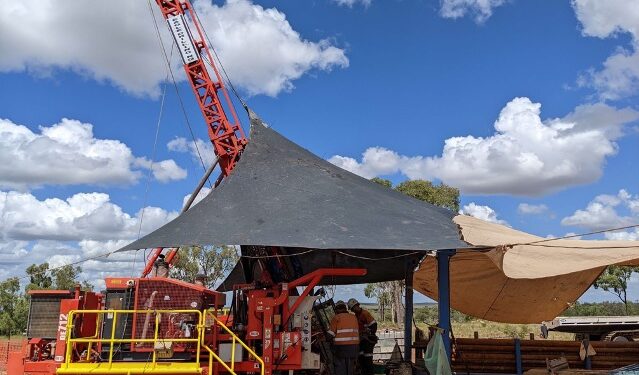GBM Resources Limited (ASX: GBZ) has commenced Phase 1 of a diamond core drilling programme at the Twin Hills Project (309 Deposit) in the Drummond Basin, Queensland, Australia.
The Twin Hills Project is considered to be under explored around the existing Mineral Resources. Current JORC (2012) Mineral Resource estimate at Twin Hills (309 and Lone Sister Deposits) is 12.9 Mt at 1.8 g/t Au for 760,700 ounces gold.
The Phase 1 programme at 309 is designed as resource definition and extension drilling. The programme is designed to confirm some of the high-grade intersections that characterise this deposit to improve confidence in the resource ounces and to test new areas; potentially adding to the already significant resource base.
Managing Director and CEO, Peter Rohner, said the immediate goal is to convert a larger proportion of the current resource from Inferred to Indicated classification as a precursor to mine design and feasibility studies planned.
He added that the investment in upgrading the camp and core processing facilities provides a functional and safe base to conduct similar programs at Lone Sister and other highly prospective targets in the recently acquired tenement package.
“Following the transformational acquisition of the Twin Hills Project, we are excited to be drilling so quickly at the highly prospective 309 Deposit and are looking forward to completing a safe and environmentally sound programme with assays flowing in a few months,” Mr Rohner said.
“GBM now has two projects with drilling underway which is great, having just come back from reviewing the drilling progress at our Malmsbury Project in Victoria with JV partner Novo Resources Corp.”
Historical Drilling
Surface drilling comprises a mix of vertical and inclined holes. Large gaps still exist in the inclined surface holes within defined resource blocks. Drilling at depth is relatively sparse, particularly on the margins of ore domains.
Extremely high-grade intercepts occur intermittently throughout the deposit and would benefit from drilling twinned/scissor holes to test consistency of these assays.
Vertical holes from surface, although at times recording significant width and grades, are often barren due to parallelism with the predominant strike/dip and may exert some negative bias to resource characterization.
Proposed Drilling
Seventeen holes (6,840 m) are planned to infill gaps, validate existing high-grade intercepts, and explore for extensions to mineralisation. All holes are planned from surface, typically inclined at -55 to -60 degrees drilling either to the south or north; generally perpendicular to the evident strike of mineralisation.
A similar programme is currently being prepared for the Lone Sister deposit, as well as regional exploration activities across the broader tenement package.
For further information please visit: https://www.gbmr.com.au/












